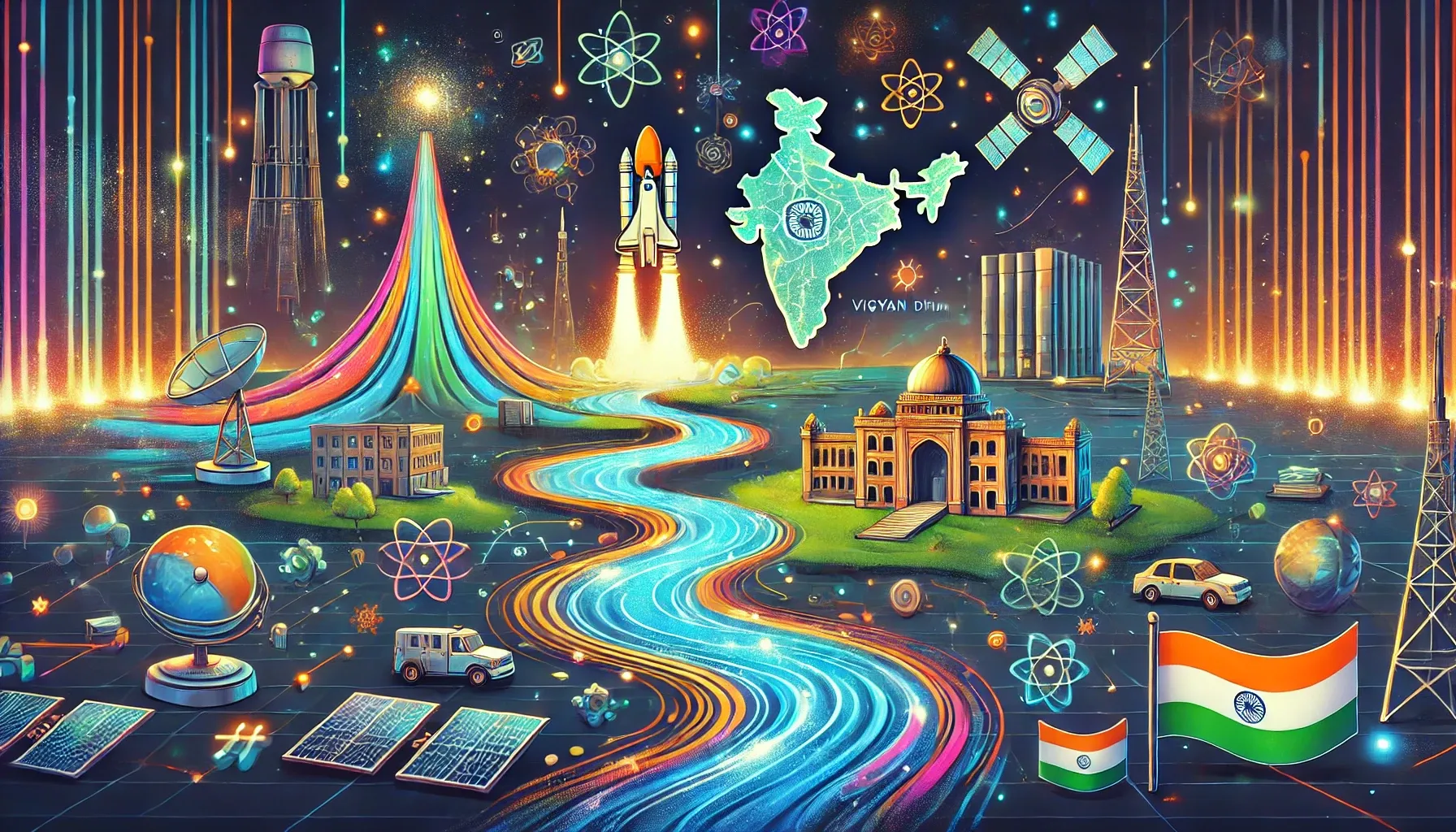UPSC
PIB
Vigyan Dhara: Catalyzing India’s Scientific Advancement
Last Updated
19th March, 2025
Date Published
18th March, 2025
Share This Post With Someone

Context:
This analysis is titled "Vigyan Dhara: A Catalyst for India's Scientific Progress," under the Ministry of Science & Technology. It details the Vigyan Dhara scheme, effective from January 16, 2025, which merges three umbrella programs to bolster scientific research, innovation, and technology deployment. With a budget of ₹10,579.84 crore (2021-22 to 2025-26), it reflects India’s commitment to scientific progress.
- Scheme Overview: Vigyan Dhara, launched on January 16, 2025, unifies three schemes to enhance India’s scientific ecosystem, with a budget of ₹10,579.84 crore (2021-22 to 2025-26), aligned with the 15th Finance Commission.
- Budget Increase: Funding rose from ₹330.75 crore (2024-25) to ₹1,425 crore (2025-26), a 4.31-fold increase, signaling strong governmental support for science and technology.
- Core Components:
- S&T Capacity Building: Strengthens research labs and human resources in academic institutions.
- Research & Development (R&D): Focuses on basic and translational research (e.g., sustainable energy, water) and international collaboration.
- Innovation & Technology: Promotes innovation from schools to industries, supporting startups and technology deployment.
- Key Focus Areas:
- Capacity Building: Establishes advanced labs, supports faculty/students, and fosters global scientific ties.
- R&D: Encourages basic research, access to mega facilities, and collaborative projects in energy, water, etc.
- Innovation: Boosts indigenous tech, startups, and tech transfer via academia-industry collaboration.
- Gender Parity: Targets increased women’s participation in science and technology fields.
- International Collaboration: Promotes joint research and knowledge exchange with global partners.
- Strategic Integration: Merging sub-schemes enhances fund efficiency and program synchronization for scientific progress.
- Key Impacts:
- Strengthened academia-government-industry collaboration.
- Greater women’s participation in S&T.
- Enhanced R&D aligned with global standards and national priorities.
- Alignment with Goals: Supports DST’s 5-year targets and Viksit Bharat 2047, with R&D linked to the Anusandhan National Research Foundation (ANRF).
- Beneficiaries: As of March 2025, 57,869 individuals benefited, including 10-15-year-olds under INSPIRE-MANAK, fostering early scientific interest.
- State-Level Impact: In Telangana, 4,002 beneficiaries utilized ₹3.3 crore by March 10, 2025, with plans for further expansion.
- Nationwide Reach: A central sector scheme implemented by DST, promoted via media, a web portal, and stakeholder engagement.
- Scientific Publications: India’s output rose per the US National Science Foundation’s report, driven by:
- Increased research budgets.
- ANRF Act 2023 establishment.
- Centres of Excellence, fellowships, and industry R&D participation.
- Extramural funding from DST, DBT, and CSIR.
- Research Areas: Includes clean energy, water, nano/advanced materials, cyberphysical systems, quantum science, geospatial tech, biotech, and industrial tech.
- Outcomes: Generates publications, patents, tech transfers, and industrial designs, with research output as a career metric.
- Vision: Aims to revolutionise India’s scientific landscape, positioning it as a global S&T leader while ensuring inclusivity and alignment with development goals.